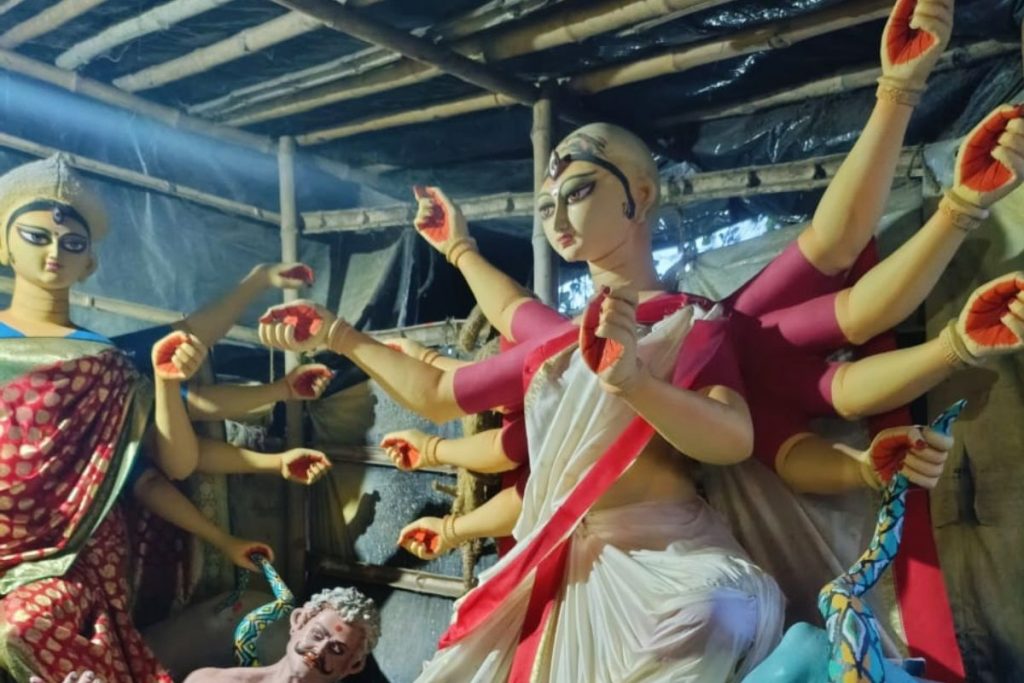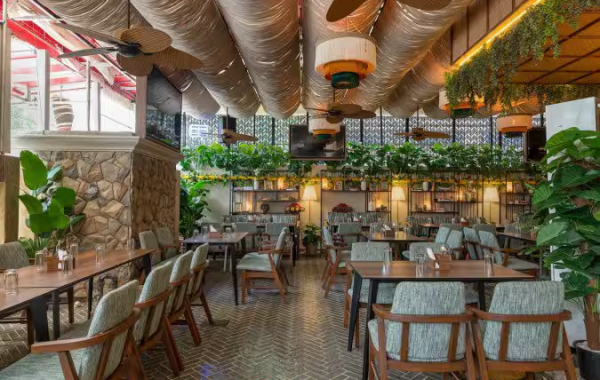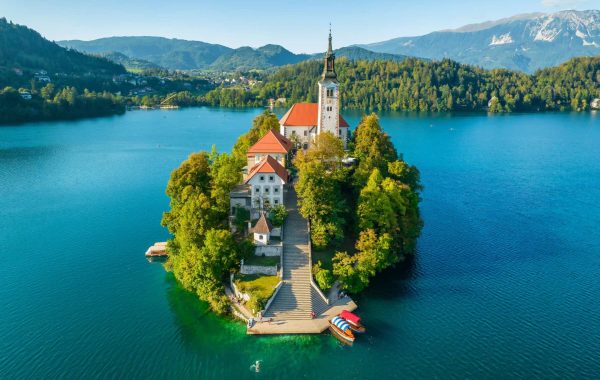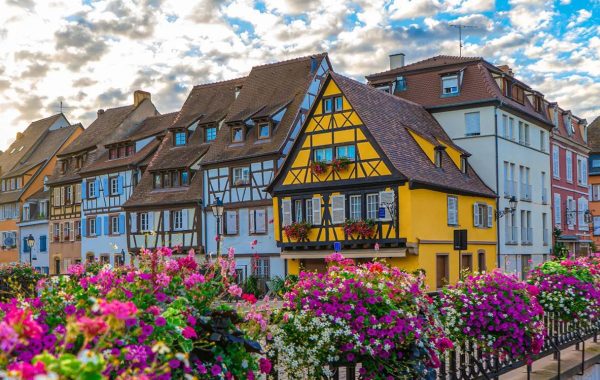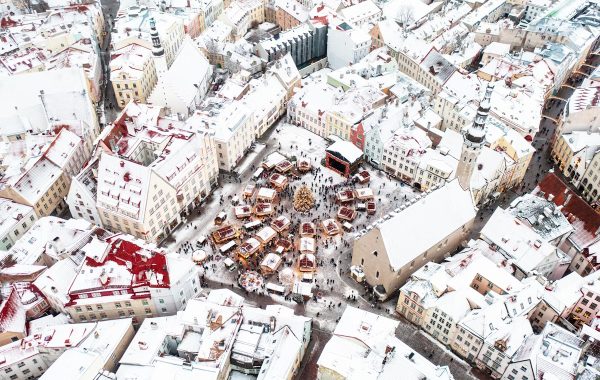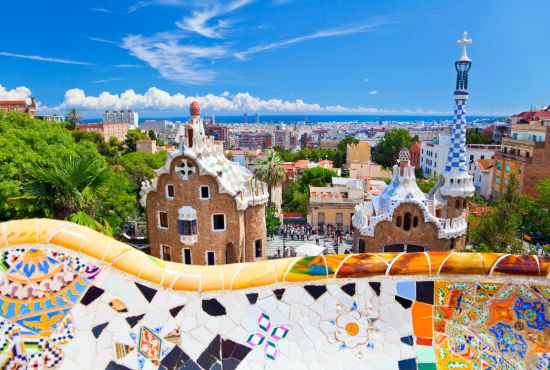Discover Kumartuli in Kolkata, the iconic potters’ quarter where Durga Puja idols come alive. Explore workshops, artisans, traditions, and travel tips in this complete guide.
Tucked away in the tangled lanes of North Kolkata lies Kumartuli, a neighbourhood that feels like an open-air studio where time bends around tradition. For more than three centuries, this quarter has been home to families of potters whose craft transforms humble straw and clay into the faces of gods, goddesses, and legends. As autumn approaches, the air turns electric: deft fingers smooth river clay into supple forms, chiselled features emerge from rough frames, and rows of unblinking eyes wait to be painted with the artist’s final stroke. The spectacle reaches its peak in the run-up to Durga Puja, when idols destined for pandals across the city—and beyond—stand tall in these dimly lit workshops. Yet Kumartuli is more than a seasonal stage; it’s an intimate encounter with living heritage. Visitors can wander its alleys, lean into tiny workshops, watch artisans at work just a few feet away, or share a quiet exchange over a cup of tea. What lingers is not just the image of the goddess, but the hum of a community where creation is a way of life, passed from one generation to the next.
Visiting Kumartuli
Months before Durga Puja, Kumartuli begins to hum with anticipation. Inside one of its dim workshops, a young artisan crouches on the floor, coaxing soft grey clay into the serene face of the goddess. Around him, his co-workers move in rhythm, layering mud over frames of wood and straw that will soon become the goddess’s body. In this single room alone, a dozen Durgas are taking shape—each accompanied by smaller figures of Lakshmi, Saraswati, Ganesh, and Kartik. In Kumartuli, the goddess never arrives without her children.

The clay, drawn from the riverbed of the Hooghly, is prized not only for its pliability but also for the spiritual weight it carries. Yet what makes these idols extraordinary is less the material than the mastery of the hands that mould them. Generations of skill flow through this neighbourhood, and demand for its craftsmen reaches far beyond Kolkata—Delhi, Chennai, Bengaluru, even the UK and US. Some artisans travel each year to create idols abroad, while others, like Babu, prefer to remain rooted in the narrow alleys where they learned their craft.
Each lane reveals a variation of the same story: small workshops where four or five idols await completion, and cavernous studios where fifty or sixty stand shoulder to shoulder, their blank faces catching the light. To step inside is to witness the goddess mid-creation—stripped of jewels and colour, still only wood, clay, and promise. For those used to seeing her in splendour, the sight can be startling, even unsettling. But in Kumartuli, this unfinished state is part of the theatre. Only when the rains recede and the festival draws near do brushes, pigments, and ornaments complete the transformation, turning clay into divinity.
The Finishing Touch: How Kumartuli Dresses Its Goddesses
While Kumartuli is celebrated for its idol sculptors, the artistry doesn’t end with clay. Tucked among the potters’ workshops are studios dedicated to the goddess’s adornment—crafting jewellery and garments that turn a sculpture into a divine presence. On one busy crossing, a large workshop glitters with paper, lace, and gota ornaments: delicate tiaras, armbands, bangles, and earrings stacked in neat rows, awaiting their moment in the spotlight.
Elsewhere, artisans shape embellishments from shola pith, a soft, ivory-white plant material found only in this region and prized for its lightness and purity. In studios, craftsmen work patiently over an intricate necklace, each curve cut with practiced precision. While Shola has grown costly over the years, those who remain devoted to tradition still return here, year after year, seeking the quiet beauty of these hand-carved ornaments—a reminder that in Kumartuli, every detail, from clay to crown, carries the weight of heritage.

Kumartuli Etiquette: The Do’s and Don’ts of Experiencing Kolkata’s Living Studi
What Not to Do
1. Don’t treat idols as photo props
Those half-finished goddesses bathed in golden light may look like Instagram perfection. But climbing onto a frame, twirling for a selfie, or brushing against a sculpture risks undoing weeks of meticulous labour. Admire with your lens—just don’t touch.
2. Don’t barge into studios
These workshops are not galleries—they are private spaces where artists work against tight deadlines. Marching in with cameras or crews without asking permission is intrusive. A polite word usually earns you entry.
3. Don’t eat or litter around the idols
Kolkata’s street food is legendary, but Kumartuli is no place for phuchka feasts. Spilled chutney or discarded wrappers can ruin fragile work and clog already-crowded lanes. Indulge elsewhere, and take your trash with you.

How to Do Kumartuli Right
1. Watch the process unfold
Slow down. Observe the layering of clay, the carving of features, the painting of eyes. The beauty of Kumartuli lies in the act of creation, not just the finished form.
2. Ask before you step in
Respect earns you access. A simple smile or greeting opens doors, and artisans often respond with warmth and stories that no guidebook could capture.
3. Support the craft
From miniature idols to shola ornaments and clay trinkets, there are small treasures to take home. Each purchase sustains a tradition that stretches back centuries.
4. Choose your moment
Visit in the morning for quiet observation, in the afternoon for bustling energy, or closer to the festival for the charged drama of near-finished idols awaiting their final adornment.
5. Carry respect above all
Walk gently through narrow lanes, acknowledge the artistry, and remember that you are stepping into a sacred cycle of work and worship. Do so, and Kumartuli will leave you with more than memories—it will leave you with wonder.
For latest travel news and updates, food and drink journeys, restaurant features, and more, like us on Facebook or follow us on Instagram. Read more on Travel and Food Network
Related Coverage
7 Extraordinary Durga Pujo Experiences to have in Kolkata, Beyond Pandal Hopping


